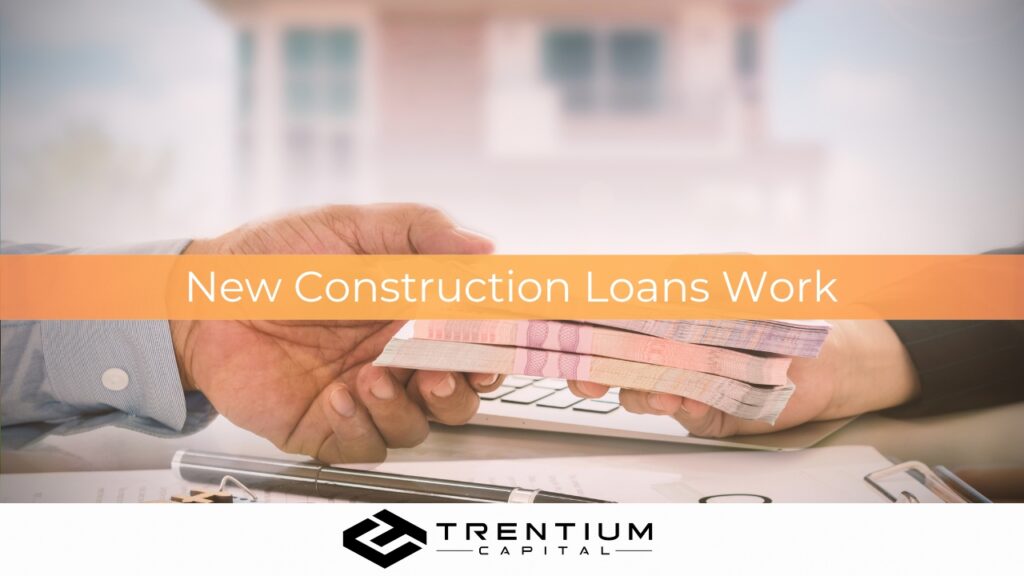Ready to build your dream home? Discover how new construction loans work and how they can help bring your vision to life.
Building a new home or undertaking a significant renovation can be exciting yet overwhelming. Whether you’re a first-time homebuyer or an investor looking to fix and flip, securing the right financing is key. New construction loans are a unique type of financing designed specifically for projects like these, but how do they work? This article explains how new construction loans operate, their types, and everything you need to know to secure one for your next big project.
How New Construction Loans Work
New construction loans are specialized, short-term loans designed to finance the building of a new home or major renovations. Unlike traditional mortgages, the loan is disbursed in phases as construction progresses, with funds released upon completion of specific project milestones.
What Are New Construction Loans?
A new construction loan is a short-term loan used to finance the construction of a new home or the renovation of an existing property. Unlike a traditional mortgage, this type of loan is intended to cover the cost of building a home from the ground up or funding significant renovations. Since new homes or renovation projects are not yet built, lenders offer construction loans to finance the project in stages. Once construction is complete, the loan typically converts to a permanent mortgage.
Key Features of New Construction Loans
New construction loans come with some specific features that differ from standard mortgages, including:
- Short-term nature: Most construction loans are short-term (usually 12-18 months).
- Draws: The loan is disbursed in phases, called “draws,” based on completing certain construction milestones.
- Higher interest rates: Due to the higher risk involved in funding construction projects, interest rates on construction loans can be slightly higher than traditional mortgage loans.
- Down payment: Lenders may require a larger down payment for construction loans than standard home loans.
Types of New Construction Loans
There are a few different types of construction loans, each suited to different needs:
Construction-to-Permanent Loans
This loan type starts as a construction loan and converts into a permanent mortgage once the project is complete. It’s ideal for homeowners who plan to live on the property after construction.
Construction-Only Loans
Construction-only loans are short-term loans that cover only the building phase. Once the construction is finished, the borrower must either pay off the loan or secure a separate mortgage to finance the home permanently.
Renovation Loans
If you’re renovating an existing home, a renovation loan like a 203(k) loan can help finance the construction and renovation costs.
The Step-by-Step Process of Getting a New Construction Loan
1. Pre-Qualification
Before applying for a construction loan, you’ll need to be pre-qualified. This involves reviewing your credit, income, and project details. Lenders will want to ensure that your project is feasible and that you can manage the loan’s financial responsibility.
2. The Application Process
Once pre-qualified, you’ll submit your application to a lender, providing details like:
- The project scope (plans, budget, timelines)
- Your financial history (credit score, income, assets)
- Builder details (licensed contractor, experience, etc.)
- Appraisal to determine the value of the property after construction
3. Loan Approval and Disbursement
If approved, the lender will start disbursing funds in stages, called “draws,” as construction progresses. For example, a draw may occur after the foundation is laid, after framing, or after the roof is installed.
4. Final Inspection and Converting to Permanent Loan
Once the construction is complete, the property will undergo a final inspection. If all goes well, the construction loan will convert into a permanent mortgage (for construction-to-permanent loans). If it’s a construction-only loan, you must secure a separate mortgage or pay off the loan in full.
See more: How to Get a Million Dollar Hard Money Loan
Common Challenges and How to Overcome Them
1. Credit Score Requirements
Construction loans tend to have stricter credit requirements due to the higher risk of funding a project that isn’t finished. To ensure a smoother approval process, it’s important to maintain a solid credit score (typically above 680) and provide a solid financial history.
2. Managing Loan Draws and Disbursements
Since the loan is disbursed in stages, you must plan carefully to ensure the funds are used appropriately and on time. You’ll need regular inspections and documentation to approve each stage, so staying organized and communicating with your lender is essential.
3. Dealing with Project Delays
Construction projects are known for delays and unexpected costs. Budgeting for contingencies and having a buffer to avoid complications is important. Work with an experienced contractor who can keep the project on track and within budget.
FAQs About New Construction Loans
1. Can I use a construction loan to build on land I own?
Yes, construction loans can be used to build on land you own. However, you may need to show the land’s value as part of the loan application process.
2. What is the required down payment for a construction loan?
Typically, lenders require a down payment of at least 20-25% of the project’s total cost. This can vary depending on the type of loan and your financial situation.
3. What is the payment structure for a construction loan?
During construction, you’ll only pay interest on the disbursed funds. Once the project completes, the loan converts into a permanent mortgage, and you’ll begin making regular monthly payments.
4. What is the typical approval timeline for a construction loan?
Construction loan approval can take anywhere from 30 to 60 days, depending on the complexity of the project and the lender’s requirements.
5. Can I use a construction loan for a fix-and-flip project?
Construction loans can be used for fix-and-flip projects. However, whether renovating an existing property or building from scratch, securing financing that aligns with your investment goals is important.
Final Thoughts: Ready to Build Your Dream Property?
If you’re planning to build your dream home or take on a renovation project, new construction loans can provide the necessary financing to make it happen. At Trentium Capital, we specialize in providing construction loans and fix-and-flip financing to help you achieve your real estate goals. Whether you’re a first-time homebuyer or an experienced investor, we offer customized solutions to fit your needs.



